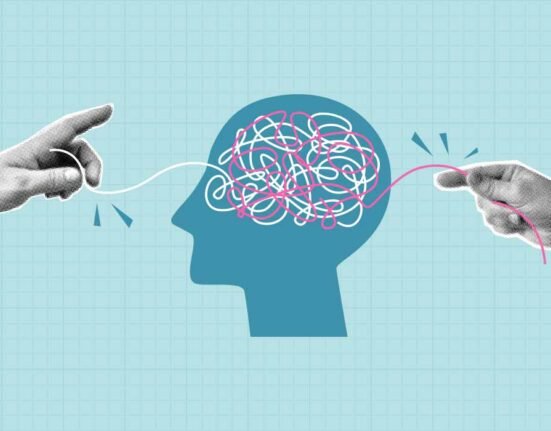Reminiscence Therapy is a psychosocial and non-pharmacological intervention that encourages people, especially older individuals and those with cognitive impairments, to discuss, reminisce and reflect on memories using sensory cues and other tailored prompts. This structured recall process aims at enhancing cognitive function, emotional well-being, and social engagement by giving individuals the means to meaningfully reconnect with facets of their personal history.
Theoretical Foundations and Core Mechanisms
This kind of intervention is grounded in psychological theories. Two great examples are Butler’s Life Review model and the Continuity Theory of Ageing. Butler’s theory proposes that older adults naturally engage in recalling and reviewing past experiences to achieve a sense of meaning and acceptance in later life. Dr. Robert Butler is thus credited with exploring this field for the very first time in the 1960s. Meanwhile, the Continuity Theory given by George L. Maddox, suggests that older people like to have consistency in their preferences, personality traits, and social experiences as they grow older, by drawing on past experiments and established patterns. These models support the explanation that revisiting one’s past promotes psychological integrity (Cuevas, P. E. G., et. al, 2020).
In clinical settings, therapists use stimuli such as old photographs, music, and familiar objects, among other things, to stimulate autobiographical memory. Sessions are delivered in individual as well as group settings at a span of 30-90 minutes, lasting in a range of weeks to months (Macleod, F., Storey, L., Rushe, T., & McLaughlin, K., 2020).
Techniques of Reminiscence Therapy
The techniques used in reminiscence therapy are several. The most used formats are visual and aural. Making people visit their memories by letting them look at older pictures from their past allows them to reminisce well. And playing music the group listening to also help them in recollect memories. Interestingly, music therapy has found its footing in more recent times, as it has been seen that the positive effects on people’s health are immense. Music therapy works especially well for senior citizens dealing with dementia and Alzheimer’s. Beyond this, other techniques that jog the memory in reminiscence therapy include stimulation of senses relating to taste, tactile and olfactory (Field, B., 2025).
Real-World Applications and Structured Protocols
Numerous clinical trials have demonstrated the diversity and efficacy of this model of therapy. Researchers conducted one trial on a group of older hospitalised adults across six sessions. Researchers asked participants to use personal photographs and thematic prompts arranged chronologically to recall significant life events. This approach resulted in reinforcement of self-esteem and life satisfaction, along with providing a supportive environment for processing past loss and grief and fostering better social connections (Nostalgia Bits Project, 2018).
Another trial involved a total of 14 group sessions conducted over a period of 7 weeks for elderly individuals who were experiencing cognitive decline. The motive was to alleviate depressive symptoms and enhance verbal communication through discussions about the lives of the participants (Group Reminiscence Therapy for Elderly People With Cognitive Decline in Institutional Context, 2018).
Digital Innovation in Reminiscence Therapy
As therapy evolves and technology advances, reminiscence therapy has adopted digital tools. One study employed a digital application incorporating Digital Reminiscence Therapy, which is designed to store multimedia files like photos, videos, audio, etc. The invention, first tested in Jordanian homes, helped people with dementia recall positive memories about their own lives in a culturally tailored format (Digital Reminiscence for People With Dementia, 2018). Since then, a lot of development has taken place in this field, with more apps coming into play, letting people from various cultures and identities use them efficiently.
Addressing Broader Aspects of Elderly Care
Reminiscence therapy works to address broader psychological and physiological concerns related to elderly care. In one trial, over eight weeks, weekly sessions covered distinct life themes from childhood and education to work, marriage and travel. This promoted adaptation and helped alleviate psychosocial distress (The Effects of the Instrumental Reminiscence Therapy, 2018). Researchers applied reminiscence therapy to elderly nursing home residents to reduce stress levels and general discomfort. The trial indirectly mitigated symptoms such as constipation by enhancing overall comfort through emotional support (Nursing Homes on Constipation and General Comfort, 2025).
Virtual group interventions, such as the life story club, use online platforms to facilitate weekly sessions for storytelling that helps combat loneliness and apathy among older adults dwelling in communities (A Virtual Life Story Club Intervention to Improve Loneliness and Apathy in Community-Dwelling Older Adults (LSC Feasible), 2025).
Evidence from Systematic Reviews
Systematic reviews support these findings. Reminiscence therapy can lead to significant improvements in cognitive function and social interaction while helping reduce depressive symptoms in older adults, including those with dementia (Abraha, I., et.al, 2017; Cuevas, P. E. G., et.al, 2020). Studies highlight the importance of framing intervention that relevant to the individual’s cultural and personal background (Woods, B., et.al, 2018; Yen, H., & Lin, L., 2017).
Conclusion: Memory as a Path toward Healing
Reminiscent therapy stands out to be a unique, dynamic and effective intervention concerning elderly care. It recognises the importance of personal history to promote emotional resilience, helps cognitive function and fosters healthy social connectedness. Taking the assistance of group storytelling sessions, use of digital innovations and more, this form of therapy continues to evolve while staying rooted to its ideas and recognising the human need to remember, reflect and be heard.
FAQs
1. What is reminiscence therapy?
Reminiscence therapy is a psychological approach that helps older adults recall and share memories to improve their emotional, cognitive, and social well-being.
2. Who benefits from reminiscence therapy?
It is especially helpful for older adults, including those with dementia or depression, as it supports memory, mood, and a sense of identity.
3. How are reminiscence sessions conducted?
Sessions use prompts like photos, music, sensory stimuli or objects to guide memory sharing. They can be done individually or in groups and often last 30 to 90 minutes.
4. Can technology be used in reminiscence therapy?
Yes, digital tools like mobile apps and support groups on video calls are increasingly used to personalise and enhance the experience.
5. What outcomes can be expected?
Participants often show improved mood, communication, social connection, and sometimes reduced symptoms of depression or anxiety.
References +
References +
- Cuevas, P. E. G., Davidson, P. M., Mejilla, J. L., & Rodney, T. W. (2020). Reminiscence therapy for older adults with Alzheimer’s disease: A literature review. International Journal of Mental Health Nursing, 29(3), 364–371. https://doi.org/10.1111/inm.12692
- Macleod, F., Storey, L., Rushe, T., & McLaughlin, K. (2020). Towards an increased understanding of reminiscence therapy for people with dementia: A narrative analysis. Dementia, 20(4), 1375–1407. https://doi.org/10.1177/1471301220941275
- Field, B. (2025, January 2). What is reminiscence therapy? Verywell Mind. https://www.verywellmind.com/how-reminiscence-therapy-works-5214451
- Nostalgia Bits Project (NOBITS) (2018). ClinicalTrials.gov. https://clinicaltrials.gov/study/NCT02077153
- Group Reminiscence Therapy for Elderly People With Cognitive Decline in Institutional Context. (2018) ClinicalTrials.gov. https://clinicaltrials.gov/study/NCT03370796
- Digital Reminiscence for People With Dementia (DTR) (2018). ClinicalTrials.gov. https://clinicaltrials.gov/study/NCT03429686
- The Effects of the Instrumental Reminiscence Therapy (2018). ClinicalTrials.gov. https://clinicaltrials.gov/study/NCT04816396
- Nursing Homes on Constipation and General Comfort (2025). ClinicalTrials.gov. https://clinicaltrials.gov/study/NCT06788392
- A Virtual Life Story Club Intervention to Improve Loneliness and Apathy in Community-Dwelling Older Adults (LSC Feasible) (2025). ClinicalTrials.gov. https://clinicaltrials.gov/study/NCT06919094
- Abraha, I., Rimland, J. M., Trotta, F. M., Dell’Aquila, G., Cruz-Jentoft, A., Petrovic, M., Gudmundsson, A., Soiza, R., O’Mahony, D., Guaita, A., & Cherubini, A. (2017). Systematic review of systematic reviews of non-pharmacological interventions to treat behavioural disturbances in older patients with dementia. The SENATOR-OnTop series. BMJ Open, 7(3), e012759. https://doi.org/10.1136/bmjopen-2016-012759
- Woods, B., O’Philbin, L., Farrell, E. M., Spector, A. E., & Orrell, M. (2018). Reminiscence therapy for dementia. Cochrane Library, 2018(3). https://doi.org/10.1002/14651858.cd001120.pub3
- Yen, H., & Lin, L. (2017). A systematic review of reminiscence therapy for older adults in Taiwan. Journal of Nursing Research, 26(2), 138–150. https://doi.org/10.1097/jnr.0000000000000233













Leave feedback about this